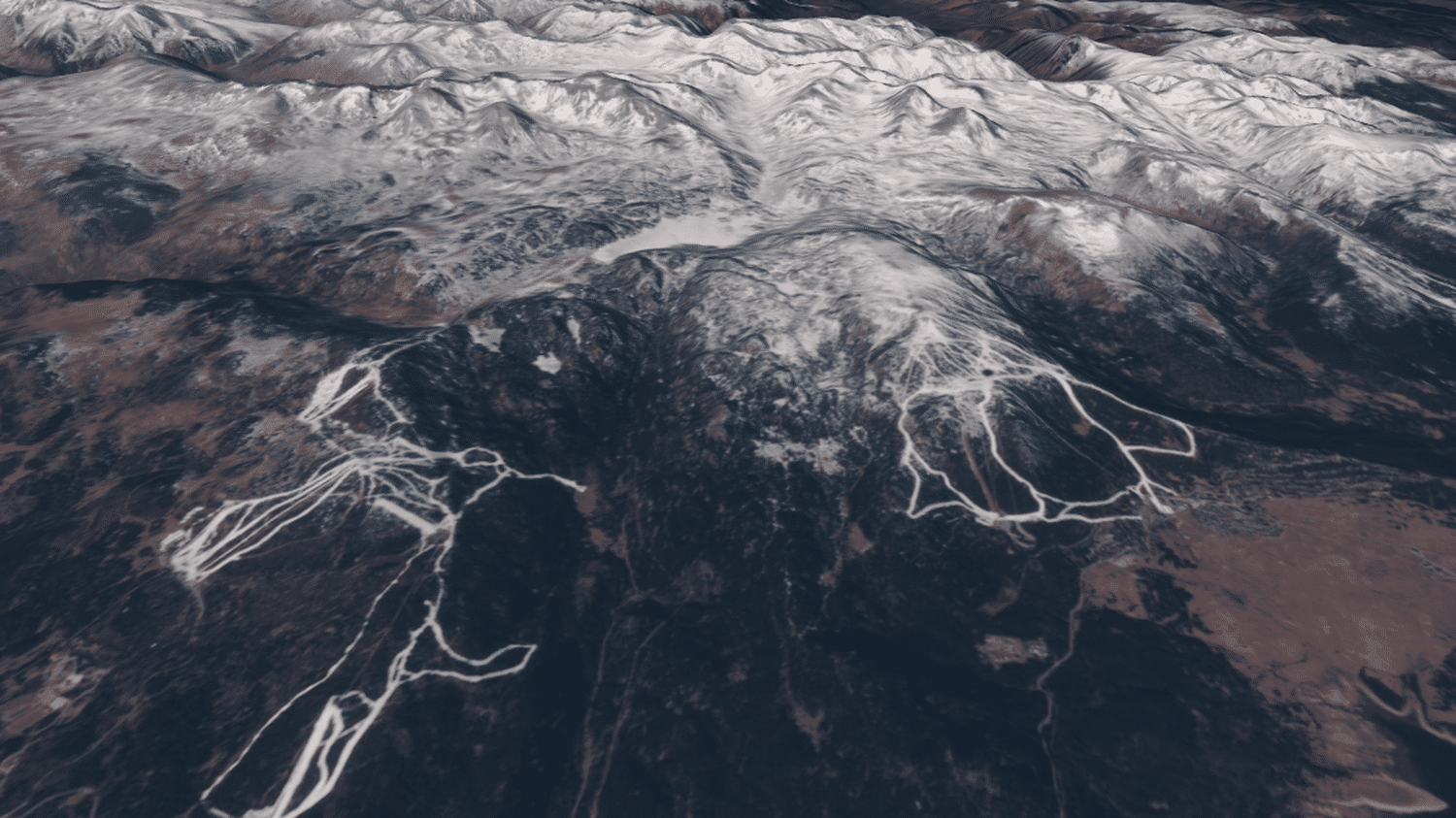Before returning in recent days, the snow had disappeared from a large part of the Alpine and Pyrenees massifs for almost the entire month of February. Unheard of in recent decades, at such a time.

Published
Reading time: 5 min

His return saved the season, headlined the daily South West , Friday March 8, in its Béarn edition. Snow has fallen again in the French mountains at the end of the winter season. A relief for winter sports professionals and their fans. Because this winter, the snowflakes were especially notable for their absence.
In February, records for low snowfall were even recorded. This exceptional phenomenon is part of a context of global warming caused by human activities. It was measured by the Center for Space Studies of the Biosphere (Cesbio). Using satellite images, researchers from this CNRS laboratory are able to calculate the surface covered by snow in the Alps and the Pyrenees.
“Stations almost closed”
The graph below shows the day-to-day evolution of the snow surface in the French Alps and part of the Swiss Alps. The red curve, which represents the level of this season, now returns to the reference values observed between 1990 and 2021. But this return to “normal” follows a particularly critical period, with 26 consecutive days below the known minimums, between January 27 and February 21. Over the entire month of February, the surface area covered by snow in the Alpine regions averaged only 37.7%.
“It is true that in February, we broke records for lightly snow-covered areas. This is linked to a very mild month of February. Snow cover was very low or even non-existent in medium and low altitude areas”, explains Simon Gascoin, researcher at the Cesbio laboratory and architect of the model which makes it possible to measure the snow-covered surfaces of the major French massifs. The highest peaks, however, remained very snow-covered. “At high altitude, above 2000 m, we have very abundant snow stocks”explains the researcher.
In the Pyrenees also, snow was conspicuous by its absence. The Franco-Spanish mountain range has suffered from the drought affecting the region. The snow-covered surface of the Pyrenean massif broke record lows for 15 days in a row, between January 26 and February 9.
The return of snow at the end of the month still made it possible to limit the damage in the ski resorts. “There are stations, like Formigal, in Spain, which almost closed”, notes Simon Gascoin. The researcher ultimately judges this winter as “a bit special”. “We had this period of early snow removal then there were these fairly late snowfalls which changed the situation”he summarizes.
The extent of the change in scenery can be seen with the satellite photographs of the stations of Font Romeu and Les Angles, in the Pyrénées-Orientales, taken on February 14 and 29. In two weeks, the landscape became completely white again. In its latest bulletin, published Wednesday March 6, Météo-France specifies that the snow cover in the Pyrenees is now “close to normal, particularly at intermediate altitudes, around 1,500 to 1,800 m.”

Copernicus Sentinel-2 satellite images
Simon Gascoin recalls that the exceptional snow removal episode which marked the month of February is one of the expected consequences of global warming. “It is entirely consistent with the forecasts”, notes the researcher. As elsewhere on the planet, the effects of warming are also increasingly felt in the mountains.
A possible impact on biodiversity
Among these consequences is the increasingly earlier melting of snow. “In spring, it gets warmer and warmer. The snow cover therefore melts faster and at all altitudes”, summarizes Jean-Michel Soubeyroux, climatologist at Météo-France. The most exceptional event in this respect remains winter 2022. “The Southern Alps in particular found themselves in a snow drought from January”recalls Simon Gascoin, co-author with Jean-Michel Soubeyroux of a research article which takes stock of this particularly dry winter.
Ski resorts are on the front line of these changes. A report from the Court of Auditors, published at the beginning of February, estimates that only “a few stations” can hope to continue their operation after 2050. But winter sports are not the only ones concerned. Researchers are also wondering about the consequences that these upheavals could have on biodiversity in the mountains. “The snow cover protects the ground from the cold in particular. So snow removal in the middle of winter, like the one we have just experienced, can have consequences on ecosystems”alerts Simon Gascoin.
